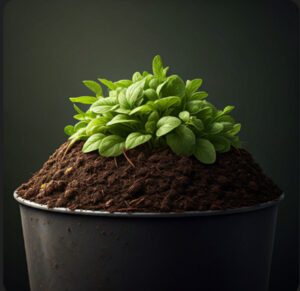Transform your kitchen waste into rich soil amendment, even in the smallest apartment
What is Bokashi Composting?
Bokashi composting is a Japanese fermentation process that transforms kitchen waste into nutrient-rich soil amendment using beneficial microorganisms. Unlike traditional composting, bokashi can handle all food waste, including meat and dairy, making it perfect for apartment dwellers who want to reduce their environmental impact.
Why Bokashi is Perfect for Apartments:
- Completely sealed system – no odors escape
- Compact size – fits under most kitchen sinks
- Fast process – fermentation takes just 2 weeks
- Accepts ALL food waste, including meat and dairy
- No fruit flies or pests
Essential Equipment
| Item | Purpose | Estimated Cost | Lifespan |
|---|---|---|---|
| Bokashi Bucket with Spigot | Main fermentation container | $30-50 | 5+ years |
| Bokashi Bran | Contains essential microorganisms | $15-20/lb | 6 months supply |
| Kitchen Collector | Temporary waste storage | $10-15 | 2+ years |
| Spray Bottle | For collecting bokashi tea | $5 | 1+ year |
Step-by-Step Process
Step 1: Setting Up Your Bucket
- Place a layer of bokashi bran at the bottom (about 1 tablespoon)
- Ensure the spigot is tightly closed
- Keep bucket in a convenient kitchen location
Step 2: Daily Waste Collection
- Cut food waste into small pieces (1-2 inch chunks)
- Add waste to the bucket
- Sprinkle with bokashi bran (1 tablespoon per inch of waste)
- Press down firmly to remove air pockets
- Close lid tightly
Step 3: Maintaining the Process
- Drain liquid (bokashi tea) every 2-3 days
- Continue adding waste until bucket is full
- Let final full bucket ferment for 2 weeks
Using Bokashi Products
Bokashi Tea Uses:
- Dilute 1:100 for watering houseplants
- Pour down drains to prevent clogs (undiluted)
- Add to toilet tank to maintain septic systems
- Water container gardens (diluted)
Fermented Waste Uses:
- Bury in container gardens
- Add to community garden plots
- Donate to local gardens
- Use in balcony planters
Troubleshooting Common Issues
| Problem | Likely Cause | Solution |
|---|---|---|
| Bad odors | Not enough bokashi bran or lid not sealed | Add more bran, ensure tight seal |
| White mold | Normal fermentation | No action needed – this is good! |
| Black mold | Too much moisture or air | Add dry bran, press waste more firmly |
| No liquid collecting | Dry waste or clogged spigot | Add moist waste, check spigot |
Cost Analysis
Initial Investment
Complete starter kit: $50-75
Includes bucket, bran, and collector
Running Costs
Bokashi bran: $30-40/year
Based on average household waste
Potential Savings
Reduced garbage bags
Free plant fertilizer
Lower plant replacement costs
Environmental Impact
Annual Impact Per Household:
- Diverts 600-800 lbs of waste from landfills
- Reduces methane emissions from organic waste
- Creates 200-300 lbs of soil amendment
- Saves 50+ gallons of chemical fertilizers
Conclusion
Bokashi composting offers apartment dwellers a practical, efficient way to reduce their environmental impact while creating valuable resources for plants. With minimal investment and space requirements, this Japanese fermentation method can help you achieve a more sustainable lifestyle, regardless of your living situation.
